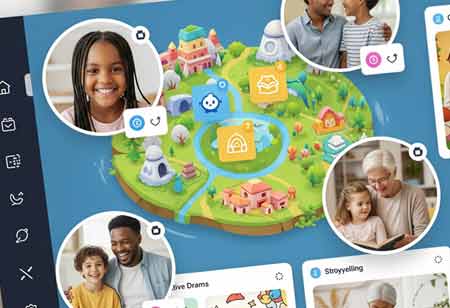THANK YOU FOR SUBSCRIBING
Be first to read the latest tech news, Industry Leader's Insights, and CIO interviews of medium and large enterprises exclusively from Gov CIO Outlook
THANK YOU FOR SUBSCRIBING

By
Government CIO Outlook | Tuesday, August 05, 2025
Stay ahead of the industry with exclusive feature stories on the top companies, expert insights and the latest news delivered straight to your inbox. Subscribe today.
Fremont, CA: Child welfare systems globally grapple with immense complexity, tasked with safeguarding vulnerable children while supporting families. In this critical domain, technology —particularly child welfare software —plays an increasingly vital role. However, to truly serve its purpose, this software must evolve beyond mere data management to become genuinely inclusive and responsive to the diverse needs of children, families, and the professionals who serve them.
The Imperative for Inclusivity and Responsiveness
Traditional child welfare software is often criticized for prioritizing compliance, data entry, and administrative requirements over human-centered practice. This approach can result in limited family engagement, where families are offered few opportunities to share their perspectives, access information, or meaningfully participate in decision-making processes. Such systems tend to reinforce a top-down dynamic, potentially alienating the very individuals they are designed to support. Additionally, many platforms lack cultural competence, failing to consider the diverse linguistic, artistic, and socio-economic contexts of families. This oversight can contribute to misinterpretation, biased assessments, and less effective interventions.
For child welfare professionals, outdated or poorly designed systems add to an already heavy workload. Cumbersome interfaces, repetitive data entry tasks, and a lack of intuitive design features can significantly reduce time available for direct engagement with children and families, an issue exacerbated by high turnover rates in the field. Likewise, existing systems often provide inadequate support for capturing and amplifying the voices of children in care, limiting their ability to express their experiences, needs, and preferences.
The fragmentation of data across non-integrated systems also impedes collaboration among key stakeholders in health, education, and mental health services. This lack of interoperability prevents a holistic view of a child’s situation and diminishes the potential for coordinated support. In response, an inclusive and responsive approach to software development is essential—one that fosters equity, empowers all stakeholders, and enables more meaningful, outcomes-driven engagement across the child welfare ecosystem.
Key Pillars of Inclusive and Responsive Child Welfare Software
Developing child welfare software requires a comprehensive, user-centered approach that prioritizes the lived experiences of children, youth, parents, and foster caregivers. Inclusive design must be embedded throughout the development lifecycle, ensuring active participation from these stakeholders so that the resulting solutions accurately reflect real-world needs and challenges.
Accessibility and usability are critical, supported by intuitive interfaces, multilingual functionality, and compatibility with assistive technologies. A mobile-first design strategy ensures the software is fully optimized for use on smartphones and tablets, increasing accessibility in diverse environments.
Equally important are transparency and data ethics. Clear data policies, informed consent mechanisms, and robust security protocols must be in place to build trust and protect sensitive information.
Effective collaboration and information sharing are vital, facilitated through interoperable systems, integrated case management tools, and secure communication channels. Additionally, empowering families and youth is central to the software’s impact. Secure online portals, age-appropriate interfaces, and self-service features enable individuals to share their perspectives, access support services, and actively participate in care planning.
The opportunities for transformation are immense. The rise of cloud-based solutions, low-code/no-code development platforms, and advancements in AI and machine learning offer new possibilities for creating flexible, scalable, and intelligent systems. By prioritizing human-centered design, fostering collaboration, and embracing ethical data practices, child welfare agencies can leverage technology to build a more equitable, effective, and truly responsive system for the children and families they serve. The future of child welfare lies in software that empowers, connects, and ultimately, helps every child grow.
I agree We use cookies on this website to enhance your user experience. By clicking any link on this page you are giving your consent for us to set cookies. More info



